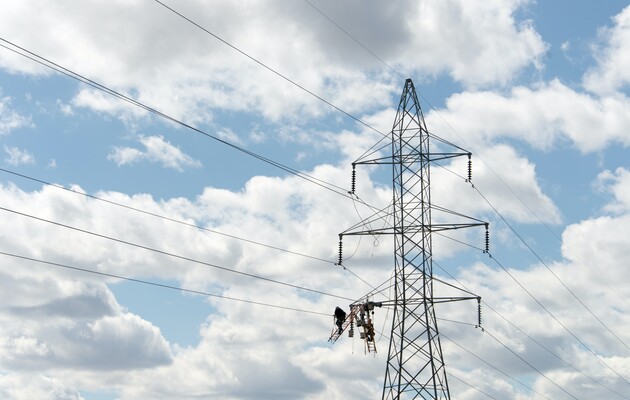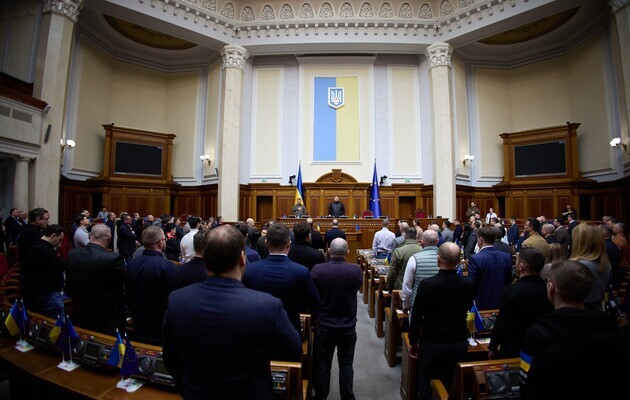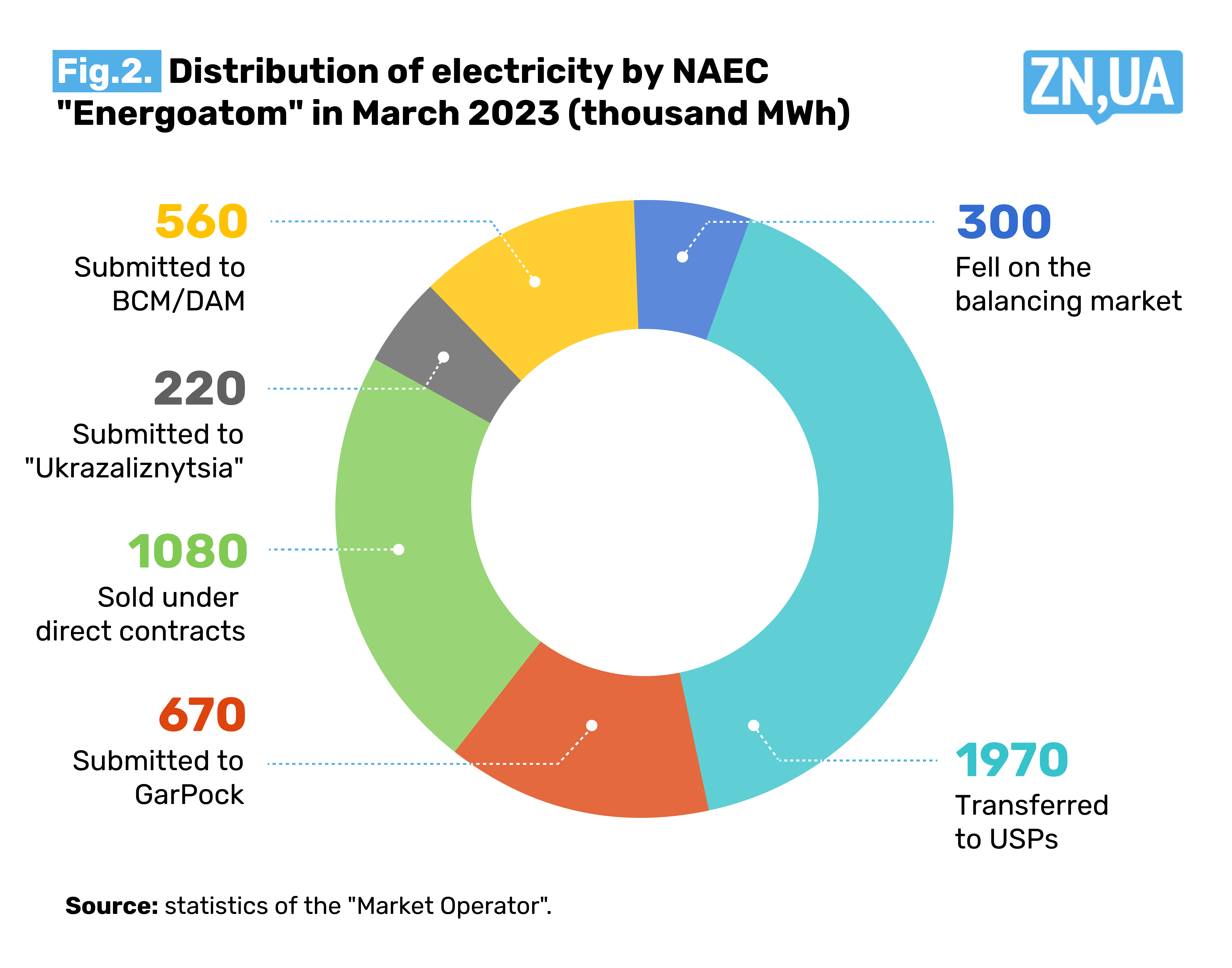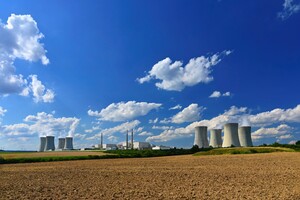How Akhmetov earned a billion hryvnias from the state company "Energoatom" in March alone

Throughout March, "air trading" took place on the spot electricity market in Ukraine. This is what the mass media once called such a process, when in 2020 it was carried out by the state-owned power company "Centrenergo", which was then under the control of Igor Kolomoiskyi. Today, the beneficiary of this process is the DTEK company.
The State Enterprise National Nuclear Energy Generating Company "Energoatom" (SE NNEGC "Energoatom") deliberately sets an inflated price of electricity on the market a day in advance. As a result, part of its resource is not sold and falls into the balancing market.
On the balancing market, this electricity is bought by the energy company DTEK, owned by Rinat Akhmetov, at one penny per megawatt-hour. Then he sells it to consumers at the market price – about UAH 3,000/MWh.
Thus, it turns out that the state-owned company produces electricity, but does not sell it. And a private one, on the contrary, does not produce, but sells it. According to our calculations, only in March, when the volumes of unaccepted resource on the balancing market were the largest, the energy company "Energoatom" lost about a billion hryvnias, which the DTEK company earned. A side effect of this scheme was the maintenance of high electricity prices even during surplus hours.
How electricity trading takes place
In order to understand the essence of the fraud, it is important to know the rules by which electricity is sold. Since July 2019, the law on the electricity market has made the rules for trading this resource in Ukraine the same as European ones.
The sale of electricity, depending on the forecasting time, takes place in four segments.
1st segment. Bilateral contract market (BCM), when electricity is sold for a quarter, month, week. Trading in this segment takes place on the platform of the Ukrainian Energy Exchange (UEE).
2nd and 3rd segments. The day-ahead market (DAM) and the intraday market (IM). This is the so-called spot market, where electricity is traded for tomorrow and today. The venue for these trades is the state-owned enterprise "Market Operator".
Obviously, the closer to the moment of consumption, the more valuable the resource is. Each subsequent segment usually shows a higher value.
4th segment. Balancing market (BM), or "punishment market". Here, players can buy with a penalty insufficient electricity, which is needed at this particular hour. On the other hand, and this is relevant for the March events, the electricity that was not sold in any of the previous segments falls here.
Then it can be bought for nothing (0.01 hryvnias/MWh) by a peaking power plant that unloads the same volume. The cost of this excess electricity is the offload premium for the peaking power plant. The administrator of Balancing market is the system operator of the NEC "Ukrenergo".
How the resource was pumped from the energy company "Energoatom" to the company DTEK
According to the NEC "Ukrenergo" data, in March the volume of positive imbalances on the balancing market increased significantly, namely up to 470,000 MWh from 180,000 MWh in January (see Fig. 1).
Why did this happen? There are objective reasons: the surplus grew due to the restoration of the system after the Russian strikes, a reduction in consumption due to warming, an increase in the amount of generation from the sun, as well as an unprecedented flood that increased generation at hydroelectric power stations.
However, this applies to the entire market. And the day-ahead market (DAM) was more influenced by man-made factors. Traders of the "Energoatom" company issued orders for sale with a high price, higher than that of other sellers. As a result, approximately 35–40% of their volumes were not accepted. The resource on the balancing market (BM) has fallen.
There, this volume was purchased by the energy company DTEK, unloading its coal units, for 0.01 UAH/MWh, and sold it already at the market price: about 3 thousand UAH per megawatt-hour.
Also, the state hydropower operator, namely the public joint stock company "Ukrhydroenergo", was unable to sell its resource in full. This is due to the severe flooding that has been going on in Ukraine almost since the beginning of the year.
However, the public joint-stock company "Ukrhydroenergo" is the second buyer after the DTEK company on the balancing market. In other words, the company is at least trying to prevent losses: it unloads its hydroelectric power stations on the amount of unsold electricity.
Since the second half of March, the state-owned company "Centrenergo" began to use this mechanism, however, in much smaller volumes than the DTEK company.
It is also important that the largest buyer on the spot market is "D. Trading" – the trading company of the DTEK. It buys 60–70% of the entire resource at the day-ahead market (DAM).
On the one hand, we have a classic monopoly conspiracy between two companies – the largest seller and the largest buyer. On the other hand, there is a deliberate assignment of losses to the "Energoatom" company by its traders in order to maintain a high price on the market.
The high price is extremely necessary for the DTEK company, which is the largest supplier of electricity in the country through "D. Trading" for large consumers, and universal service providers (USP) for small consumers and the public.
It is interesting that approximately the same situation was observed in the spring of 2020, which was investigated by the "Schemes" project conducted by Radio Liberty. At that time, the resource of the "Energoatom" company on the balancing market (BM) was purchased by the state-owned power generation company "Centernergo", which was controlled by the management of Igor Kolomoiskyi.
However, at that time electricity in the balancing market (BM) was purchased not at the symbolic price of UAH 0.01/MWh, but at 55% of the RDN price. And the volumes with this year's scheme are incomparable: 2 thousand MWh for two months of 2020 against 300 thousand MWh only for March 2023.
How much resource did "Energoatom" lose
In order to understand the extent of losses of a state-owned company, it is necessary to know how its electricity is distributed.
We will remind that today the "Energoatom" company bears the biggest financial burden of providing the population with cheap electricity in accordance with Cabinet of Ministers of Ukraine Resolution No. 483 of June 5, 2019 on the assignment of special duties (ASD).
From October 2021, there was an attempt to introduce the so-called financial public service obligation (PSO), when the state-owned companies "Energoatom" and "Ukrhydroenergo" would cover the losses of universal service providers (USP) from the supply of cheap electricity to the population with money, not goods.
However, in fact, the financial public service obligation (PSO) did not work. Each month, the "Energoatom" company gives up to half of the volume produced by it to public utility companies for the needs of the population and to cover losses. According to the public service obligation (PSO) regulations, the "Energoatom" company sells the resource to universal service providers (USP) at the price of the basic electricity per the day-ahead market (DAM), which was established three months before.
After February 24 of last year, the Ministry of Energy of Ukraine, by its order, obliged the "Energoatom" and "Ukrhydroenergo" companies to transfer additional volume to the state-owned enterprise "Guaranteed Buyer" (GarPok), which distributes it among universal service providers (USP) in accordance with their applications to compensate for losses from the supply of electricity to the population.
Another forced-voluntary burden of the "Energoatom" company, albeit in smaller volumes, is direct deliveries of electricity to the joint-stock company "Ukrazaliznytsia" at below-market prices.
The "Energoatom" company can sell everything that is left on the free market under direct contracts the bilateral contract market (BCM) or on the spot market the day-ahead market (DAM) or the intraday market (IM).
The most obvious step for the nuclear power plant (NPP) operator would be to sell off as much as possible under direct contracts. However, it is in no hurry to adapt to market conditions and reduce prices at auctions of the bilateral contract market (BCM). Because of this, most lots are not sold. The "Energoatom" company is forced to go with this resource to the day-ahead market (DAM), where it once again sets an exorbitant price. It is not sold again, and it "falls out" with its resource on the balancing market.
In March, the "Energoatom" company produced slightly less than 5 million MWh. Of these, it supplied 1.97 million MWh directly to universal service providers (USP), and sent another 0.67 million through the enterprise GarPok. Another 0.22 million MWh went to the joint-stock company "Ukrazaliznytsia" in accordance with the contract of November 2022 at a regulated preferential price of UAH 2,300/MWh.
According to the data in the LLC Ukrainian Energy Exchange auction bulletins, 1.08 million MWh were sold under direct contracts in the commercial segment. In mid-February, the price was UAH 3,250/MWh, then UAH 3,100. At the end of February, when it started to get warmer, and the network restrictions after the Russian missile and drone strikes gradually decreased, the price dropped to UAH 2,800/MWh.
During March, the "Energoatom" company could not sell electricity more expensively than UAH 2,700/MWh. However, the prices did not drop any cheaper.
As a result, the "Energoatom" company was forced to sell about 40% of the amount of electricity available for sale, namely 0.85 million MWh, on the spot market. Of them, according to the statistics of the "Market Operator", 560,000 MWh were sold. The rest, namely about 300,000 MWh – fell on the balancing market (see Fig. 2).
That is, the "Energoatom" company produced, but did not sell, a resource worth approximately one billion hryvnias (multiply 300,000 MWh by 3,000 hryvnias/MWh). Accordingly, the DTEK company owned by Akhmetov did not produce, but sold electricity for the same amount.
How to explain the behavior of the company "Energoatom"
Last time, when the "Energoatom" company "lowered" its resource in a balancing market, its managers informally explained it as the need to "hold the price", because the "Energoatom" company is a market maker – the largest market player. Otherwise, the company will lose much more by selling the entire volume at low prices.
However, when the unloading premium is almost 100% of the price, even the sale of the entire resource at UAH 2,650/MWh (currently this is the lower limit of the price for the day-ahead market (DAM) during daytime hours) is still more profitable than free transmission in the balancing market of about 300,000 MWh.
It should be noted that this scheme could not have taken place without the conscious decision of the "Energoatom" company managers to cause losses to their company. Thus, according to LLC Ukrainian Energy Exchange data, from March 3 to 10, the "Energoatom-Trading" held six auctions for sale under bilateral contracts, bidding for March volumes of 1.5 million, then 0.7 million, then 0.5 million MWh. But the percentage of sales at these auctions ranged from 0.6 to 11%.
And in the same days, nuclear energy almost "fell out" on the balancing market at the day-ahead market (DAM). It would be profitable for the company to sell this resource at any price above 1 penny per megawatt-hour.
On the other hand, the DTEK company received from this scheme not only free electricity for sale, but also kept the high price of electricity in the presence of surplus hours. As it is known, in Ukraine the day-ahead market (DAM) is a benchmark for the price of electricity supply. Usually, suppliers prescribe the price formula " the day-ahead market (DAM) price minus 2%" in contracts.
Who is responsible?
Obviously, such a scheme could not take place without at least the tacit approval of the industry leaders from the state. Among them are Minister of Energy of Ukraine Herman Galushchenko, who used to work at the "Energoatom" company as the deputy of the acting president Petro Kotin, head of the National Commission for Energy Regulation Kostyantyn Uschapovskyi, and curator of the industry in the president's office, deputy head of the Office of the President of Ukraine Rostyslav Shurma.
It is significant that at the end of 2022, the head of the DTEK company Maksym Timchenko publicly criticized the management of the industry by the state. The biggest indignation in the holding was caused by Shurma's idea to shift part of the special duties of compensating the population for a preferential price to heat generation. That is, at the DTEK company.
In informal conversations with journalists, the DTEK company representatives directly indicated that "Shurma, Uschapovskyi and Galushchenko destroyed the energy system": the "Energoatom" company has large losses, the production of state coal has fallen critically, the "Centrenergo" company is bankrupt.
In 2023, another information war between the DTEK company and current energy officials ended. As long as the "Energoatom" suffers losses in favor of the DTEK, the energy system is in peace and quiet.
Read this article in russian and Ukrainian.
Please select it with the mouse and press Ctrl+Enter or Submit a bug
















 Login with Google
Login with Google